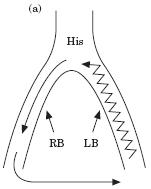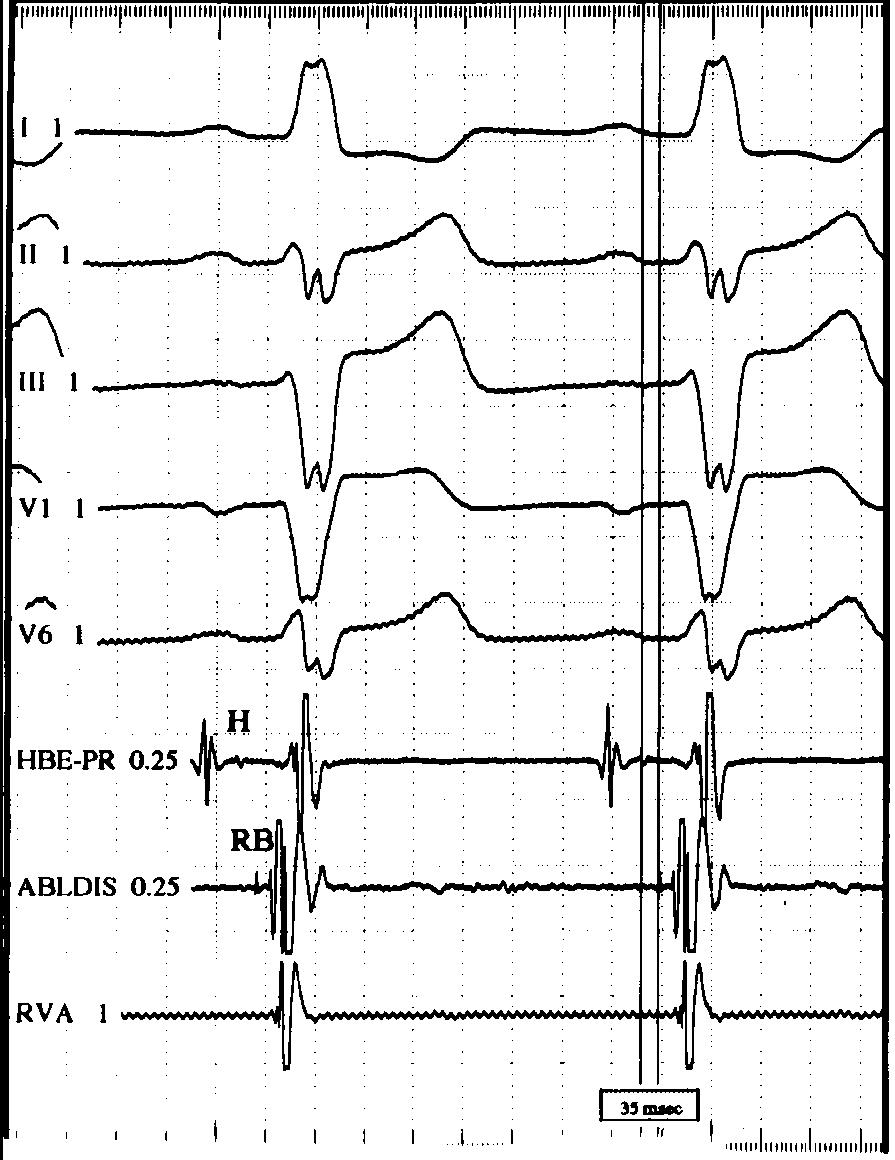Bundle branch reentrant ventricular tachycardia
|
Ventricular tachycardia Microchapters |
|
Differentiating Ventricular Tachycardia from other Disorders |
|---|
|
Diagnosis |
|
Treatment |
|
Case Studies |
|
Bundle branch reentrant ventricular tachycardia On the Web |
|
to Hospitals Treating Bundle branch reentrant ventricular tachycardia |
|
Risk calculators and risk factors for Bundle branch reentrant ventricular tachycardia |
Editor-In-Chief: C. Michael Gibson, M.S., M.D. [1]; Associate Editor-In-Chief: Cafer Zorkun, M.D., Ph.D. [2]
Overview

Bundle branch reentry ventricular tachycardia usually occurs either in patients with structural heart disease or in patients with conduction disturbances with a structurally normal heart. Bundle branch reentry is a macro-reentrant tachycardia that incorporates the His-Purkinje system, the bundle branches, and transseptal myocardial conduction in the circuit. Typical Bundle Branch reentry tachycardia uses the right bundle as the anterograde limb and the left bundle as the retrograde limb. Atypical Bundle Branch reentry uses the left bundle (anterior fascicle, posterior fascicle or both) as the antegrade limb and the right bundle as the retrograde limb. The tachycardia appears as a typical Left Bundle Branch Block or Right Bundle Branch Block.
Diagnosis
- Each ventricular activation is preceeded by His bundle activation (see Figure)
- Changes in the HH Interval precede changes in the VV interval
- Tachycardia induction is associated with critical delay in the HPS Initiation or a V-H increment (“V-H jump”) (see Figure)
- A longer H-V interval during tachycardia as compared with sinus rhythm. This is paradoxical because one would expect it to be analogous to the situation with fascicular tachycardia, the wavefront in Bundle Branch Reentry Ventricular Tachycardia usually proceeds retrogradely through the left bundle branch system. It then divides with a portion continuing retrogradely to the site of the His bundle recording, and another portion turning anterogradely along the right bundle branch to the ventricle. Since this impulse enters the distal His bundle, and then proceeds retrogradely to the His bundle recording site and simultaneously anterogradely down the right bundle branch, one might expect the ventricle to be depolarized with an HV interval shorter than during sinus rhythm. This does not occur and the longer HV interval typically seen in BBRT is probably due to a combination of some effects of relative refractoriness of the right bundle and a predominant role of anisotropic conduction.
- Tachycardia is terminated by block in the HPS
- Tachycardia is abolished by ablation of the RBBB
 |
 |
Helpful Maneuvers
- Single PVC advances His
- Entrainment from Left bundle. The interval from the stimulus to QRS approximates that from the LBB potential to onset of QRS. PPI and TCL are the same.